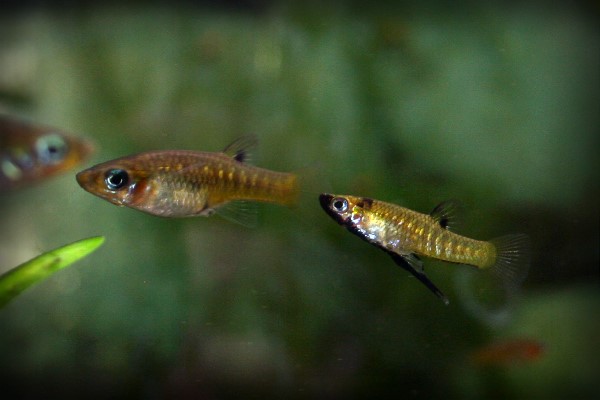Archive for November 9th, 2013
Farlowella vittata
Posted by lasaquatics in catfish, fish, other catfish on November 9, 2013
Farlowella vittata is a twig catfish from Venezuela and Colombia. It lives among plants and roots along the banks of flowing waters. Males guard the eggs while they incubate, and other females often come along to add to the brood. After hatching, the young use up their yolk sac quickly and then have a most voracious appetite. The #1 cause of loss of Farlowella fry is starvation. They need very soft vegetable-based food, and lots of it to survive. We have had the best luck with Repashy foods, which comes as a powder and is mixed with water to make a gel that can be cut into blocks that the fry can graze from all day.
Neocaridina davidi Sakura Red Cherry Shrimp
Posted by lasaquatics in Invertebrates, nano, shrimp on November 9, 2013
Neocaridina davidi, formerly heteropoda, is a strikingly beautiful little freshwater shrimp that we’ve had for several years now. Females are fat and bright red… males are smaller and less brightly colored.
Pseudotropheus demasoni
Posted by lasaquatics in cichlids, fish, lake malawi on November 9, 2013
Pseudotropheus demasoni is one of my favorite little dwarf mbuna from the Pombo Rocks in Lake Malawi in Africa. Males and females are nearly identical, though males tend to have slightly longer ventral fins and clearer egg spots. This fish is very active and highly aggressive. Best kept in large groups where aggression can be dispersed among many individuals.
Assassin Snail (Clea helena)
Posted by lasaquatics in Invertebrates, snails on November 9, 2013
Assassin snails assass other snails. Seriously, though, they are an interesting, pretty and useful addition to aquariums where pest snails are a problem. They move very quickly as snails go, and eat… you guessed it… other snails (and of course, being scavengers, leftover fish food). Any snail that is smaller than they are is at risk, though they’ll generally leave large snails and nerites alone unless they are very hungry (or the snail makes itself easy prey by being almost dead)… at this point they will ‘gang up’ on the large or tough snail. These guys lay a single egg in a little square packet just above the surface of the substrate along plant stems or at the base of decor. The babies are very tiny versions of their parents and start their careers out on tiny versions of prey species parents. Life in miniature.
Nerite Snails
Posted by lasaquatics in Invertebrates, nano, snails on November 9, 2013
Nerite snails are actually a saltwater snail that adapts very well to fresh water, though they will not reproduce in fresh water (they do lay eggs, which don’t hatch). They are voracious algae eaters, and tanks with enough of them will stay sparkling clear. While assassin snails will usually leave them alone (preferring easier prey), they will gang up on a nerite if they are very hungry, or if the nerite is weak or dying (usually from starvation). It is important (assassin snails or not) to make sure the nerites get enough to eat… if the glass stays crystal clear at all times, it’s a good idea to supplement their diet with algae wafers, though they will forage on any uneaten food in the tank. While nerites can live with assassin snails under the right conditions, they cannot live with snail-eating fish like loaches. Olive nerites are probably the most common nerite available to aquarists, and they behave themselves very well… some of the larger nerites, like Zebras, will occasionally try to go on vacation outside the tank, so a tight-fitting lid is recommended. If you do find one on the floor, don’t assume it’s dead. Nerites can live for quite a long time out of water if their trap is closed tightly. Pop him back in his tank, or if you’re anxious about possibly polluting your tank with a dead snail, put him in a bucket of tank water and watch… as long as his trap is there and closed, or if he’s moving around, you can assume he’s alive. Dead snails lose their trap door and rot pretty quickly.






















Recent Comments